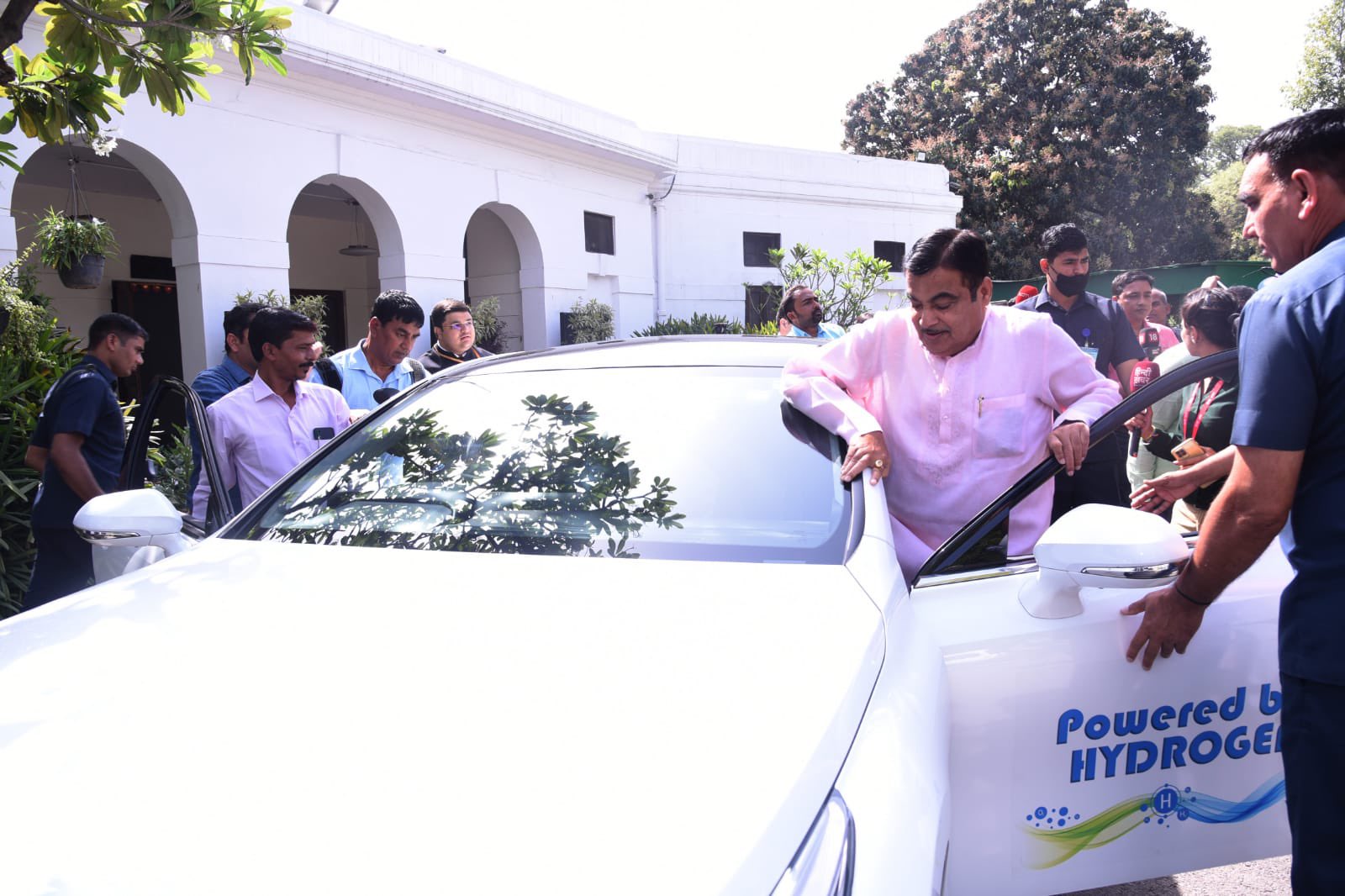
Union Minister Nitin Gadkari arrived in Parliament on Wednesday in a vehicle that uses hydrogen as fuel. His move is being discussed all over the country. At present, people all over the country are trying to get complete information about his car. However, Gadkari has not only given the message of using green energy with the use of this car, but if seen from a macro perspective, his move also shows the changing stance of the Indian government on green energy options.
Know first- In which vehicle did Nitin Gadkari reach Parliament?
The Union Minister for Road Transport and Highways reached Parliament in a Mirai vehicle of the Japanese company Toyota. It has three hydrogen tanks, which refill like a normal petrol vehicle in just five minutes. The fossil fuel (petrol-diesel) powered motor is replaced by a 1.24 kWh lithium-ion battery pack to power the vehicle. To make the car powerful, there is an electric motor of 182 horsepower.
What is the meaning of Gadkari coming in a hydrogen-powered vehicle?
After reaching Parliament in a hydrogen-powered vehicle, a post on the microblogging website Ku from Gadkari's office said- "Union Minister Nitin Gadkari arrived at Parliament House today in a hydrogen-based fuel cell-powered electric vehicle (FCEV). Green Hydrogen By showcasing this car, Gadkari Ji worked to spread awareness about hydrogen and FCEV technology and its benefits, so that hydrogen-based society can be promoted in India too."
It is worth noting that even before this, Nitin Gadkari had said in Goa that he would start using such a vehicle as a pilot project which would run on green hydrogen. He had said that for this the Indian Oil Corporation would ensure the supply of green hydrogen.
How Gadkari's car is different from other electric vehicles, what is the change in the government's stand?
Significantly, the central government has been emphasizing gradually reducing the use of fossil fuel ie petrol-diesel-powered vehicles, and increasing the use of renewable energy. However, hydrogen-powered vehicles are rarely mentioned by the government. Even in the budget, Finance Minister Nirmala Sitharaman had mentioned the facility of battery swapping i.e. battery charging at the battery charging station but did not talk about hydrogen-powered vehicles. However, Transport Minister Nitin Gadkari has been referring to hydrogen-powered vehicles on several different occasions. Now once again by taking the hydrogen-powered car to Parliament, he has clarified the stand on the changing policy of the government.
In such a situation, it is important to know what kind of electric vehicles have been mentioned by the central government till now, and after all, what is the basic difference between conventional EVs and vehicles running on hydrogen cells?
How many categories of electric vehicles?
Electric vehicles using clean energy are mainly divided into four categories.
1. Conventional Hybrid Electric Vehicle (HEV)
2. Plug-in Hybrid Vehicle (PHEV)
3. Battery Powered Electric Vehicle
4. Fuel Cell Electric Vehicle (FCEV)
To which vehicles are the government leaning?
It is worth noting that the vehicles that have received most of the publicity from the government's side so far have been Battery Powered Electric Vehicles (BEVs). That is vehicles that run on traditional battery charging technology. However, the hydrogen-powered vehicle introduced by Gadkari is a Fuel Cell Electric Vehicle (FCEV). That is, unlike conventional clean energy vehicles, it does not require charging, but like fossil fuel vehicles, they can be run immediately by filling green hydrogen i.e. clean fuel.
Introduced by Gadkari, Toyota's Mirai is a car running on FCEV technology, which runs on hydrogen gas. An electric motor is also present in the car to convert this green fuel into energy. In FCEVs, when hydrogen fuel combines with oxygen in the atmosphere to generate electricity, this electricity powers the electric motors of vehicles.
At present, Honda's Clarity and Hyundai's Nexo are also two more hydrogen cars working on the same technology.
Battery-powered vehicles or hydrogen-powered cars, know which is better?
One of the major reasons for the change in the government's approach is that while hydrogen-powered FCEVs run directly on green fuel, battery-powered BEVs work thanks to charging. Now, while refueling an FCEV takes only a few minutes, it takes at least 30 to 45 minutes to charge a vehicle with a battery.
Good Friday 2023: 'Good Friday', one of the main festivals of Christianity, will be celebrated th
A case of vandalism has come to light in a church in Punjab's Tarn Taran city. Four accused enter
There was a stir in the film circles when the news of the separation of B-town star couple Govind
Corona cases have started increasing once again in the country. After Kerala, Karnataka, now ther
Sir give 300 rupees to girlfriend, Amit Mishra showed his kindness and sent so many rupees
Former India cricketer Amit Mishra is in a lot of discussions these days for his funny tweets. He
Ajit Pawar-led Nationalist Congress Party (NCP) on Tuesday announced the names of two more candid
In the United Nations Security Council ie UNSC, India once again described terrorism as the bigge
US reaction on PM Modi's comment 'Today's era is not of war', America told India a major ally
Will come on India tour on 1st March. Before that America reacted regarding its relations with In
The relations between Turkey and Pakistan are not hidden from anyone. Being both Islamic nations,
Kushi Advance Booking Open Now: South superstars Samantha Ruth Prabhu and Vijay Deverakonda are i